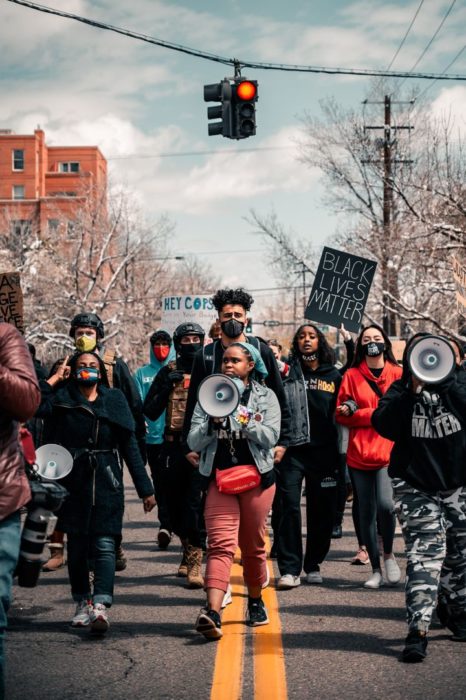
The study “News media framing of social protests around racial tensions during the Donald Trump presidency” by Yotam Ophir of University at Buffalo, State University of New York, Dror Walter and Virginia Massignan of Georgia State University, and Devin K Forde and Madison Neurohr of University at Buffalo, State University of New York looked at the news media framing of protests during the Donald Trump presidency, Unite the Right and the Black Lives Matter protests.
There were 1231 news articles dealing with the Unite the Right rally in Charlottesville, Virginia, and a total of 2810 articles dealing with Black Lives Matter protests used in the study. The articles were from New York Times, Washington Post, Wall Street Journal and USA Today. The research questions were dealing with how the articles were framed, what kind of differences were there with the framing of the events and whether and how the frames changed during the coverage period.
Frames are defined as, following the definitions by Entman and that of Gitlin, as “the selective presentation of events and issues through a focus on arguments, perspectives and facts, that could in turn influence audiences’ thinking and reactions to news items”.
They can be identified either deductively (based on pre-set frames that are applied to the articles looked) or inductively (based on what kind of frames arise from the articles). In addition, there is a combined method utilized here, Analysis of Topic Model Networks, ANTMN, which uses both in a multi-step approach.
The first protest looked at, the Unite the Right rally, took place on August 12th 2017 for the main rally, a smaller one the night before, in Charlottesville. The protestors mainly consisted of various far-right groups, such as alt-right, neo-nazis, and white supremacists. The rally attracted counter-protests by groups such as BLM and Antifa. There were fights between the opposing groups, leading to injuries. A public outrage followed President Trump’s equivocating condemnation, which he clarified two days later.
The second set of protests followed the killing of George Floyd by the police officer Derek Chauvin in the presence of three other police officers. The officers were later arrested, but the event triggered a large series of protests across the globe, in over 2000 cities. The majority were peaceful but some escalated into riots and clashes between the protesters and police and counter-protesters.
Two of the frames in the protest, the ‘protest paradigm’ and the ‘public order’ frame were congruent with previous literature on frames. The public order frame included topics such as ‘George Floyd’ and ‘Breanna Taylor’. In addition, there was a ‘debate’ frame, which dealt with the substance of the protests. For the present study, the most prominent frame was the ‘political’ frame, which looked at the impact of the protests. This frame could also be termed ‘The political ramifications of Trump’s mishandling of the protests’, since that topic was so prevalent.
It is notable that the political frame was a novel finding not present in deductive frames of the past. The authors argue that the reason for this might be overreliance on pre-set categories on the one hand, or changes in journalistic practice during the Trump administration on the other.
It was also found out in the process that BLM rallies were covered in manner suggesting general support for the protesters and their cause, while no such support was evident for Unite the Right. For the BLM protests, the unique nature of the protests when applied to the ‘protest paradigm’ means a distinction between ‘protesters vs the police’ and ‘protesters vs the targets of the protest’ is impossible.
The study was a mix of computative, computer-driven methodology and a qualitative analysis. The authors suggest that future studies should focus on the causes on the increased attention to politics.
The article “News media framing of social protests around racial tensions during the Donald Trump presidency” by Yotam Ophir, Dror Walter, Virginia Massignan, Devin K Forde and Madison Neurohr is in Journalism. (free abstract).
Picture: Untitled by Colin Lloyd.
License Unsplash.